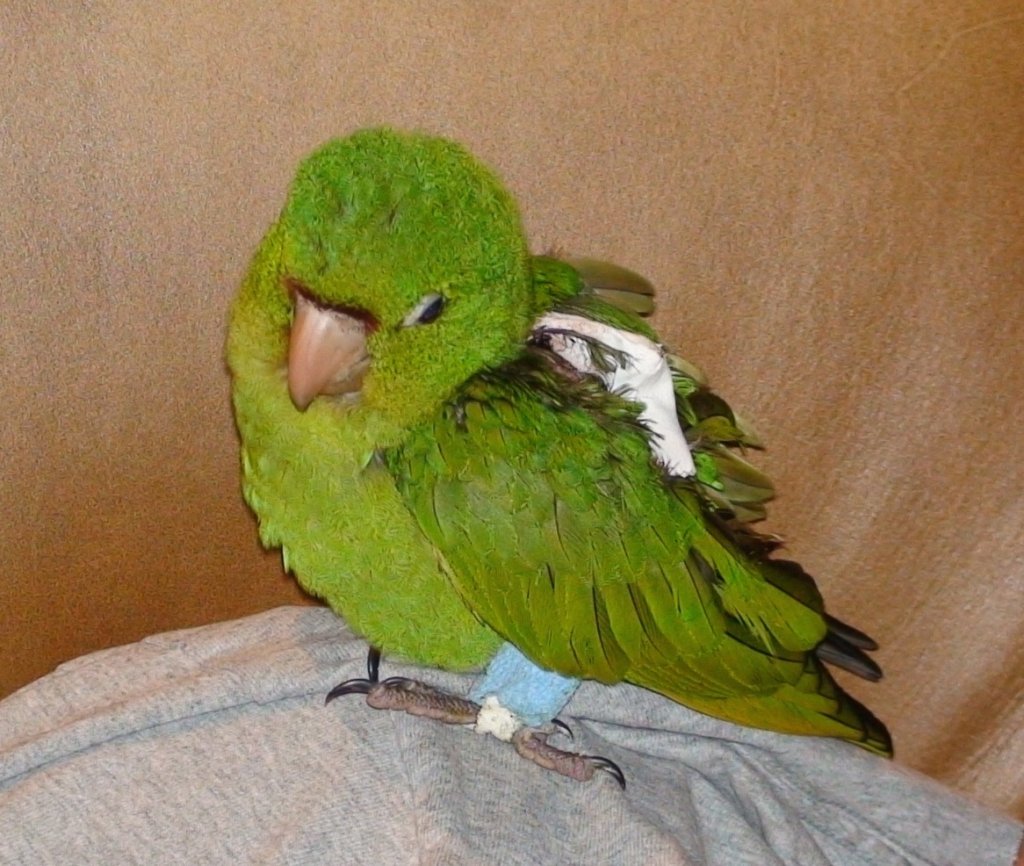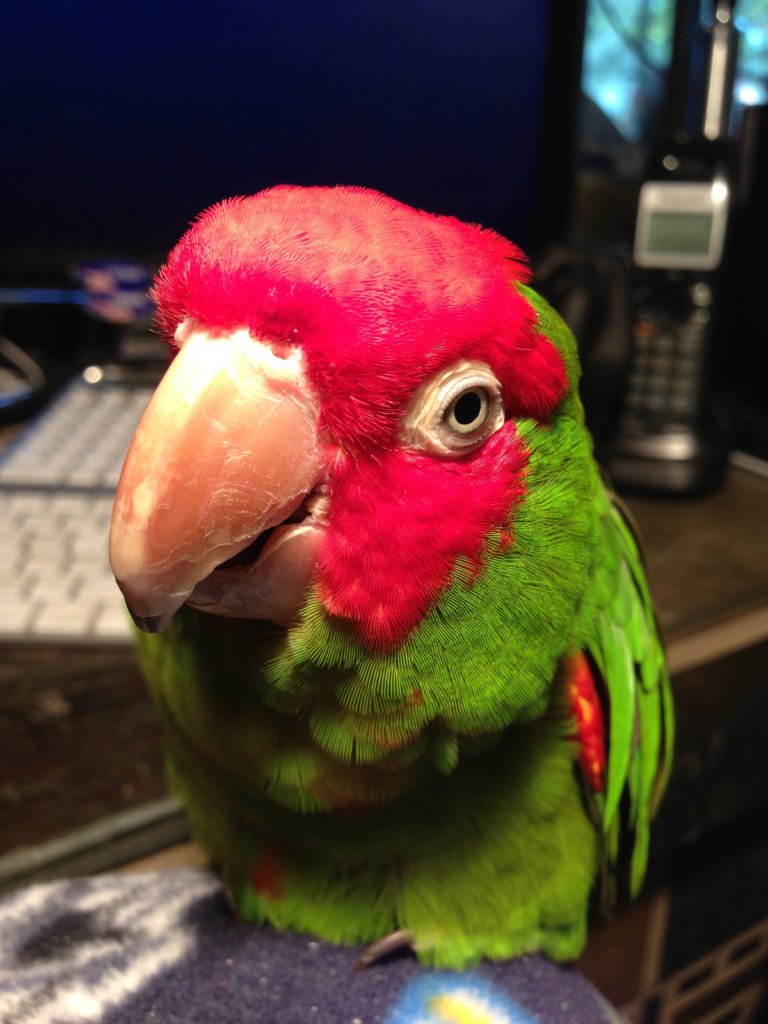By Josh Bridwell | Project Leader
If you're a Game of Thrones fan you know that Winter Is Coming. Here at SCP we know that the Parrots Are Coming. This is the time of year we look forward to and dread at the same time. We take in parrots that are just starting their lives that we can rehabilitate as well as others that come in too broken to help. It's the constant joy and sorrow that a rehabilitator just has to deal with. The babies have started arriving. We take in a lot of parrots but sometimes there are some that stand out for one reason or another to the point that they earn a name. As a rehabilitator you have to try to not get too attached since the whole point of our rescue is to release every bird we see. One of the babies that came in last month inspired this GlobalGiving report.
When you earn a name like Two Stroke as a baby with no feathers then you must be pretty special. A two stroke engine is the motor that powers a motorcycle. Brooke, our founder, grew up in the mountains of Kentucky and has been around a dirt bike or two. We have a baby that came in from Pasadena that begged louder and longer than any other baby we've seen in all the years we've been a rescue. By begging I mean a very loud and repetitive huh-huh-huh-huh sound. I'll attach a link below to some video that will show what that sounds like. So little Two Stroke is very impressive in his begging abilities. It makes sense that if these sounds make us pay attention that this would also attract the attention of Two Stroke's parents during feeding time. His call is so loud and extended that we think he might be an amazon that we are not used to dealing with. He has some yellow feathers coming in under his eyes so there is a possibility he is a red-lored amazon which are quite a bit larger than the red-crowns we are used to dealing with. As babies they are just impossible to tell what type of amazon they will be until their feathers start coming in. Please take a look at the pictures and videos of two Stroke that I attach below, I plan on following his story as he grows and is ready for release.
I was reviewing a previous report from September 2016 and saw another little personality I'd like to share with you. There were three nest mates that came to us because of tree trimmers. They were three red masked conures with no feathers and the youngest had not even opened its eyes yet. This parrot was very small and was very lethargic. He wound up growing at a slower rate than his siblings but he did survive. When we have parrots this small that need special attention to make sure they survive, there is always a chance they will not "wild up". I'm sure you can guess by now that this little guy earned a name, Conner the conure. His two older siblings did "wild up" and were released earlier this year. Conner became imprinted and we decided it was best to not attempt a release. This is always a hard decision but we know that if he didn't have the round the clock care that caused the imprinting that he would not have made it. Conner is sassy as a good conure should be. He won't hesitate to join in when it's time to make noise, which is pretty often in a house filled with parrots. He loves to have his head rubbed by women but I usually have a 50/50 chance of a head rub or a finger bite depending in his mood. I would say he can hover more than fly. He can make it over to Brooke when she's 10 feet away but it takes about 10 seconds for him to get there and boy is he tired. What is really nice is that he has become friends with Nene, the first conure we rescued and is represented in our logo. Conner has learned how to be sassy from his buddy Nene.
Nene came to us back in 2007. He was the first parrot we took in for surgery and proved to us how tough these little guys are. He was a fledgling learning to fly and our best guess is that he was hit by a car. His left wing and left leg was broken. His lower beak is permanently shifted to the right. Nene had external fixators on his wing to be able to allow it to heal with shattered bones. 10 years later he's still a ball of fire. He'll never fly, his foot has never regained its strength and we have to trim his beak to keep it growing normally. None of this has ever slowed down Nene. He earned his name after the nene goose of Hawaii. He likes to be loud and he sounds like a nene. Just so you know, a conure is not happy unless it is making noise. Conures aren't great "talkers" but Nene picked up "Nene! Stop it right now!". This was before we knew that parrots will learn the thing they hear the most. Ten years every time another bird is being loud, Nene makes sure to tell them to "Stop it right now." Followed by "I said stop!" For as much conures can drive you crazy, they are also the sweetest birds. Nene likes to blow kisses when he is in a good mood and is ready for some head rubs. These are some of the personalities here at SCP that keep us going.
Our baby season is just starting. I included a link to Brooke's personal Facebook page where she is posting videos of the daily feedings of the new babies. It's a great way to learn what we do and to watch how fast these baby parrots grow. I'll have more updates on how our 2017 season is going in the next report. As always, we hope our intake numbers go down this year. Thank you for all of the support you give, we appreciate everything you do.
Links:
By Josh Bridwell | Project Leader
By Josh Bridwell | Project Leader
Project reports on GlobalGiving are posted directly to globalgiving.org by Project Leaders as they are completed, generally every 3-4 months. To protect the integrity of these documents, GlobalGiving does not alter them; therefore you may find some language or formatting issues.
If you donate to this project or have donated to this project, you can receive an email when this project posts a report. You can also subscribe for reports without donating.
Support this important cause by creating a personalized fundraising page.
Start a Fundraiser
